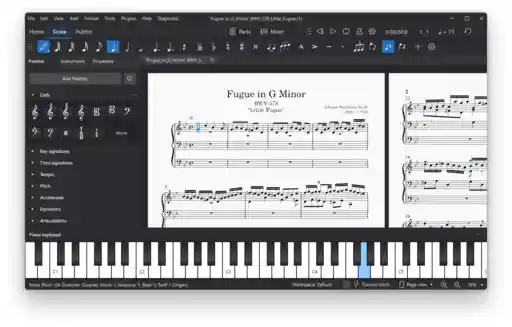Music is an essential part of any film or television show, and a good soundtrack can make or break a production. Film scoring is the art of composing music specifically for movies and TV shows, and it requires a unique set of skills and knowledge. In this article, we’ll explore the basics of music theory for film scoring and how you can use these concepts to create memorable soundtracks.
Understanding Basic Music Theory Concepts
Before we dive into film scoring, it’s important to have a basic understanding of music theory. Music theory is the study of how music works, including the fundamentals of melody, harmony, rhythm, and form. These concepts are essential to creating effective and memorable music, whether you’re writing a pop song or a film score.
When it comes to film scoring, there are a few key concepts to keep in mind:
- Melody: The melody is the main theme or musical line that listeners will remember. In film scoring, the melody is often associated with the main character or the emotional tone of a particular scene.
- Harmony: Harmony refers to the chords and harmonic progressions that support the melody. Harmony can create tension or release, and it’s essential for setting the emotional tone of a scene.
- Rhythm: Rhythm refers to the timing and flow of the music. In film scoring, rhythm can be used to create tension or build suspense.
- Form: Form refers to the structure of the music. In film scoring, form can help guide the audience through the emotional journey of a scene.
Using Music Theory in Film Scoring
Now that we have a basic understanding of music theory, let’s explore how these concepts can be used in film scoring. When composing a film score, there are a few key considerations to keep in mind:
- Emotional Tone: The emotional tone of a scene is one of the most important considerations when composing a film score. The music should support and enhance the emotional content of the scene, whether it’s sadness, joy, or suspense.
- Character Theme: Creating a theme for a particular character can help establish their presence in the film and make them more memorable. The theme should be simple and easy to remember, and it should be associated with the character’s emotional journey throughout the film.
- Dynamics: Dynamics refer to the volume and intensity of the music. In film scoring, dynamics can be used to create tension and release, and to enhance the emotional content of a scene.
- Musical Motifs: Musical motifs are short musical phrases that can be used to create a sense of continuity throughout a film. By using similar motifs throughout the score, you can create a sense of unity and coherence in the music.
- Timing: Timing is essential in film scoring, and the music must be timed precisely to match the action on screen. This requires a deep understanding of both music and film editing, and it’s essential for creating a seamless and effective score.

https://creativecommons.org/licenses/by-sa/4.0
via Wikimedia Commons
Recommended Music Theory Books for Film Scoring
If you’re interested in learning more about music theory for film scoring, there are many great books available that can help you hone your skills and take your music to the next level. Some of the top books include:
- “The Complete Guide to Film Scoring” by Richard Davis: This book provides a comprehensive overview of the film scoring process, including the basics of music theory, the business of film scoring, and the technical aspects of composing music for film.
- “Music Theory for Computer Musicians” by Michael Hewitt: While not specifically geared towards film scoring, this book provides a great introduction to music theory for anyone interested in creating music with computers.
- “Film Music: A Very Short Introduction” by Kathryn Kalinak: